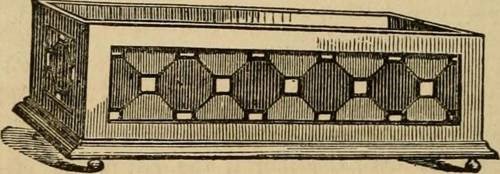
FAQ About Indoor Plant Foliar Nutrition

What is foliar nutrition for indoor plants?
Foliar nutrition refers to the method of applying liquid fertilizers directly onto the leaves of plants. This technique allows plants, especially indoor ones, to absorb nutrients through their leaves, which can be advantageous for certain plants that may have difficulties obtaining necessary nutrients through their root systems.

How does foliar feeding work?
Foliar feeding works by applying a nutrient-rich solution onto the leaves of plants. The stomata and epidermis of the leaves absorb these nutrients, allowing them to be immediately available in the plant's system. This can lead to quicker nutrient uptake compared to traditional soil-based fertilization.

What are the benefits of foliar feeding indoor plants?
Foliar feeding offers several benefits including quicker nutrient absorption, preventing nutrient leaching in soil, and bypassing root absorption barriers. This is particularly useful for indoor plants that may experience poor soil conditions or have weak root systems.

Can all indoor plants benefit from foliar nutrition?
Not all indoor plants may benefit equally from foliar nutrition. While many plants can utilize this method effectively, plants with waxy leaves or those with tougher leaf surfaces may not absorb nutrients as well. It's important to know the specific needs and characteristics of each plant before starting foliar feeding.

What types of nutrients are commonly used in foliar sprays?
Common nutrients used in foliar sprays for indoor plants include nitrogen, phosphorus, potassium, and micronutrients such as iron, magnesium, and manganese. The specific nutrient blend depends on the plant's needs and any deficiencies that need to be addressed.

How often should foliar feeding be done on indoor plants?
The frequency of foliar feeding depends on the specific needs of each plant and the conditions they are growing in. Generally, once every two weeks is sufficient, but it can vary based on plant species, growth phase, and existing soil nutrient conditions. Always monitor the plants for signs of over-fertilization.

Are there any risks or downsides to foliar feeding?
While foliar feeding can be beneficial, there are potential downsides such as leaf burn if too concentrated solutions are applied, potential for fungal infections in overly humid conditions, and the possibility of nutrient imbalance if not conducted alongside soil nutrient management.

What is the best time of day to apply foliar spray?
It is best to apply foliar sprays in the early morning or late afternoon when temperatures are cooler and evaporation rates are lower. This helps to ensure that the nutrients are absorbed effectively by the plant leaves rather than evaporating in the heat of midday.

How can you tell if foliar feeding is working?
Signs that foliar feeding is working include improved leaf color, enhanced growth rates, and a healthier overall appearance of the plant. Monitoring the plant’s response over a few weeks will help determine the effectiveness of the foliar feeding regimen.

Can foliar feeding replace soil fertilization for indoor plants?
Foliar feeding should not be seen as a complete replacement for soil fertilization but rather as a supplement. While it provides quick nutrient access, soil-based feeding ensures the long-term availability of nutrients through the soil. Combining both methods yields the best results for indoor plant health.

What should be considered when preparing a foliar spray solution?
When preparing a foliar spray solution, consider the concentration of nutrients, water quality (preferably non-chlorinated), and the specific nutrient needs of the plant. Ensuring the solution is well-mixed and at the correct strength is crucial to avoid leaf damage.

Is it possible to over-fertilize indoor plants with foliar feeding?
Yes, over-fertilization can occur with foliar feeding if nutrient concentrations are too high or applications are too frequent. Signs of over-fertilization include leaf burn, discoloration, and reduced plant growth. It's important to follow guidelines and adjust based on plant response.

What are some common signs of nutrient deficiency in indoor plants that foliar feeding can help with?
Common signs of nutrient deficiency include yellowing leaves (chlorosis), stunted growth, poor fruiting or flowering, and leaf curling or distortion. Foliar feeding can help quickly address these deficiencies by providing immediate nutrient availability.

Are there specific tools or equipment required for foliar feeding?
Basic tools for foliar feeding include a spray bottle or garden sprayer for even distribution. It's also beneficial to have protective gloves, eye protection, and a pH meter to ensure the spray solution is optimal for plant absorption.

Can homemade solutions be used for foliar feeding?
Homemade solutions can be used for foliar feeding if they are carefully prepared to ensure the correct nutrient balance and pH levels. Common ingredients include diluted liquid fertilizers, compost teas, and seaweed extracts. Always ensure homemade mixes are tested on a small plant area first to avoid damage.

How does foliar feeding affect indoor plant pests and diseases?
Foliar feeding can strengthen plant health, making them less susceptible to pests and diseases. However, it can also create humid conditions that favor some diseases, particularly fungal infections. Ensuring good air circulation and not over-wetting the leaves can help mitigate this risk.

What is the role of pH in foliar feeding solutions?
The pH of a foliar feeding solution affects nutrient availability and absorption through plant leaves. Ideally, the pH of the solution should match the plant's natural environment, usually around 5.5 to 6.5 for most indoor plants. Testing and adjusting the pH ensures maximum effectiveness.

Are there foliar feeding techniques that are more suited to specific plant types?
Yes, different types of plants may require specific techniques based on their leaf surface and growth habits. For example, plants with hairy or textured leaves may need a surfactant in the spray to facilitate absorption, while others with soft, broad leaves absorb nutrients readily without added agents.

Can foliar feeding be used during all stages of plant growth?
Foliar feeding can be beneficial during various stages of plant growth, but it's particularly useful in times of rapid growth or stress. During flowering or fruiting, more attention should be given to ensure the nutrient balance supports the plant's developmental stage without causing harm.

How can environmental conditions impact the success of foliar feeding?
Environmental conditions such as humidity, temperature, and light can impact the effectiveness of foliar feeding. High humidity and lower temperatures aid in better absorption, while high temperatures can lead to quick evaporation. It's crucial to consider these factors for optimal results.
